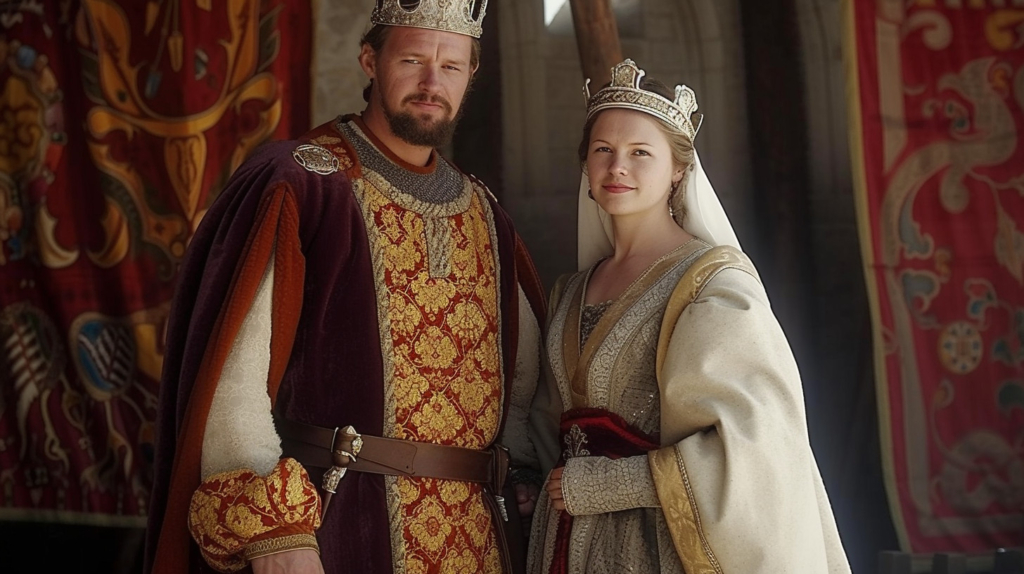In a previous post I wrote about the Danish presence in England, that began with the raid on Lindsifarne in 793. After establishing a kingdom around York/Jorvik, the English eventually drove out the Vikings from England around 954. But they would return.

Around 990 the Danish king Svend Tveskæg (Sweyn Forkbeard in English) wad driven from Denmark and fled to England. Together with the Norwegian exiled king Olav he raided in England for a few years.
Svend’s sister Gunhild married a leader of a Viking mercenary army employed by the English king Ethelred. When they defected to fight for Svend, Ethelred took his vengeance by slaughtering people of the Danelaw, amongst others Gunhild and her husband.
Svend retaliated by invading England in 1003. It is believed to have been a revenge rather than conquest, but in 1013 he decided to conquer England and claim the crown for himself. Ethelred fled, and Svend was proclaimed king. However, he died shortly thereafter, in February 1014.
Svend had two sons, Harald, who was made king of Denmark, and Knud (Canute the Great) who was elected king of England. Ethelred returned to fight for the crown, but in 1016 Knud was victorious. Two years later, his brother died and he was made king of Denmark as well. He also made himself overlord of Norway and controlled parts of Sweden, making him extremely powerful.

Knud married Ethelred’s widow, Emma of Normandy. She agreed to marry him on the condition that if they had sons, they would become Knud’s heirs, rather than the sons he already had with his first wife, Ælfgifu, Svein and Harald. Emma too had sons from her first marriage to Ethelred, Alfred and Edward. The new royal couple had two children together, Hardeknud (Harthacnut) and Gunhilda.
When Knud died in 1035, it lead to a power struggle between his sons. At the time of Knud’s death, Hardeknud was in Denmark, where he succeded his father as king. He was Knud’s heir in England as well, but due to political unrest in Denmark he could not leave. Emma acted as regent in his place, but the Englishmen felt that Hardeknud had forsaken them, and his half-brother Harald Harefoot took the throne.
Hardeknud prepared for battle, but just prior to his return to England, Harald fell ill and died in 1040. Hardeknud could therefore claim his crown without bloodshed.
Hardeknud himself was sick and had no heirs, so he made his half-brother, Edward (the Confessor) his heir. When Hardeknud died in 1042, it was the end of the Danish rule over England.
Hall, Richard. Stora boken om Vikingarna. (2007)
Hjardar, Kim. Vikingarnas Värld. (2016)
Lihammer, Anna. Vikingatidens Härskare. (2021)

